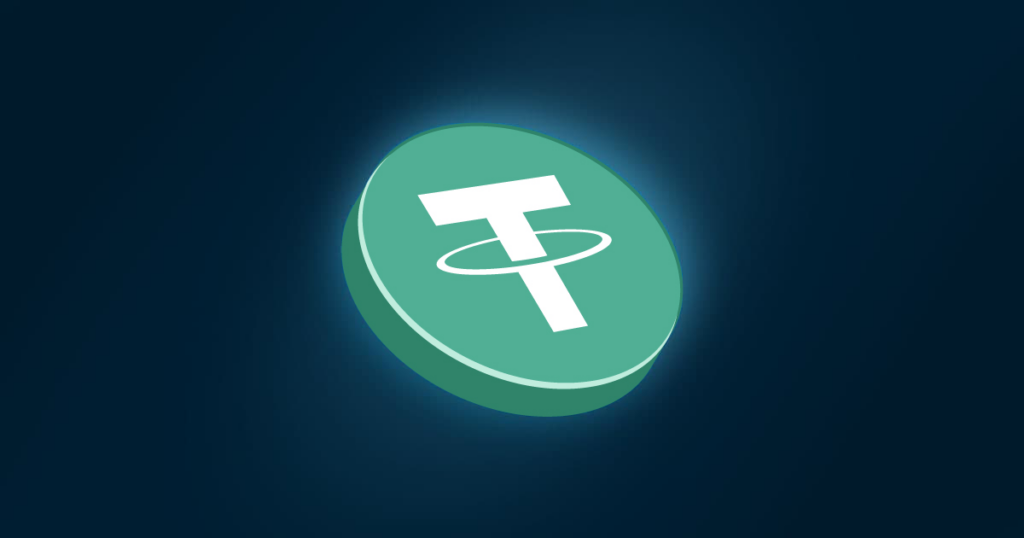On March 27, 2025, Tether, the company behind the world’s largest stablecoin USDT, announced it is considering launching a U.S.-based stablecoin to align with emerging regulatory frameworks in the United States. This move comes as U.S. lawmakers intensify efforts to regulate stablecoins, with bills like the STABLE Act gaining traction. Tether’s potential pivot to a Tether US stablecoin reflects a strategic effort to comply with U.S. crypto laws while maintaining its dominance in the $233 billion stablecoin market, where USDT holds a 60% share as of early 2025.

A Response to Regulatory Pressure
Tether’s exploration of a U.S.-based stablecoin follows months of dialogue with U.S. policymakers. Posts on X indicate that Tether has been engaging with Representatives Bryan Steil and French Hill, co-authors of the STABLE Act introduced on February 6, 2025. The legislation mandates strict requirements for stablecoin issuers, including a 1:1 reserve ratio backed by U.S. dollars and monthly audits by a certified third party. Tether, which has faced scrutiny over its reserve transparency since its inception in 2014, appears to be adapting to these demands to secure its foothold in the U.S. market.
Currently, USDT operates primarily on blockchains like Ethereum, Tron, and Solana, with a total supply exceeding 142 billion tokens. However, its operations are based in the British Virgin Islands, and its reserves—comprising U.S. Treasury bills, Bitcoin, and other assets—have been a point of contention. A February 2025 JPMorgan report warned that only 66% to 83% of Tether’s reserves meet proposed U.S. regulations. This shortfall could force the company to sell its $8 billion Bitcoin holdings. Launching a U.S.-based stablecoin may resolve these issues by ensuring full compliance with local laws, including stricter reserve and auditing standards.
The Strategic Implications
A U.S.-based stablecoin could reshape Tether’s role in the global financial system. CEO Paolo Ardoino has consistently defended USDT’s role in maintaining dollar dominance, emphasizing its use by over 400 million people, especially in emerging markets. In a February 2025 interview with Bloomberg, he argued that USDT’s global adoption reinforces the U.S. dollar’s influence. This counters claims from competitors like Circle, the issuer of USDC, that foreign stablecoins need stricter oversight. If launched, a U.S.-based token would allow Tether to compete directly with USDC, which operates under U.S. regulations and holds over $34 billion in reserves.
Moreover, this move aligns with broader trends in the stablecoin space. Bank of America announced in February 2025 its plan to issue a stablecoin. The bank emphasized that dollar-backed digital assets are inevitable in traditional finance. Similarly, World Liberty Financial, tied to former President Donald Trump, revealed its stablecoin plans in October 2024. This move reflects the growing interest in regulated digital currencies. Meanwhile, Tether’s potential U.S. token could capitalize on its existing infrastructure. The network spans 13 blockchains, including recent expansions to Polkadot and Avalanche. With this foundation, Tether may offer a compliant option for American users and institutions.
Challenges and Market Dynamics
Despite the opportunities, stablecoin regulation 2025 presents significant hurdles for Tether. The STABLE Act and the GENIUS Act, under review in the U.S. Senate, impose rigorous oversight, requiring issuers to obtain licenses, manage risks, and maintain transparent reserves. Tether’s history of regulatory fines—$61 million in 2021 from the CFTC and New York authorities for reserve mismanagement—casts a shadow over its compliance efforts. Additionally, a recent Wall Street Journal report from October 2024 noted that U.S. federal prosecutors are investigating Tether for potential violations of anti-money laundering and sanctions laws, though Ardoino dismissed these claims as “old noise.”
The competitive landscape is also heating up. Circle’s USDC, with a $34 billion market cap, has positioned itself as a regulatory-friendly alternative, while new entrants like StablR, backed by Tether’s own investment in December 2024, are expanding regulated stablecoin offerings in Europe under the EU’s MiCA framework. Tether must navigate these pressures while ensuring its Tether USDT compliance strategy doesn’t alienate its global user base.
Conclusion
Tether’s consideration of a U.S.-based stablecoin marks a pivotal moment for the company and the broader crypto market. By aligning with U.S. crypto laws, Tether aims to secure its dominance amid stablecoin regulation 2025 pressures. However, regulatory scrutiny, competitive challenges, and its own controversial history could complicate this transition. As the stablecoin sector evolves, Tether’s next steps will likely influence the future of digital finance in the U.S. and beyond.




